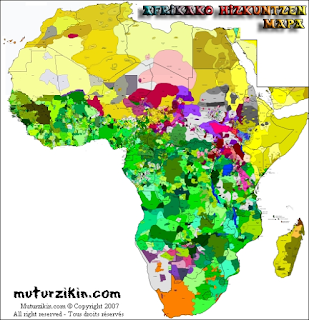The eleventh in a series of biennial Language and Development Conferences will be held in New Delhi, India on 18-20 November 2015, with the theme "Multilingualism and Development." Of the previous ten conferences, two have been held in Africa (2005 in Addis Ababa, Ethiopia and 2013 in Cape Town, South Africa) and the other eight in various parts of Asia. Nevertheless, the conference topics seem as relevant to African realities as those in Asia and elsewhere.
In its own words, the conference series
26 June 2015 12 July 2015 - deadline extended) are outlined:
In its own words, the conference series
... explores the role of language in development. It addresses the issues of world, national, second and minority languages and the role they play in economic, social and cultural development; language policy, conflict transformation, language rights and identity; communication, education and development and language pedagogy.The current theme - Multilingualism and Development - begins with the simple observation that "Linguistic and cultural diversity is a fact of life in developing countries...," under which several subthemes and suggested topic areas (relevant for the call for papers - submissions due
- Multilingualism and the metropolis
- The issues that might be addressed include but are not limited to the following:
- Identifying and describing the linguistic implications of urbanisation
- The benefits of linguistic hyperdiversity
- Linguistic barriers experienced by migrant populations in urban contexts
- How schools, health clinics and other government services cater for speakers of dozens of different languages in super-diverse urban contexts
- The practice of MTB MLE - and the capacity of schools to provide it - in multilingual urban contexts
- Social division as an unintended consequence of MTB MLE in multilingual contexts
- Multilingualism in semi-urban and urban non-metropolitan contexts
- Language, technology and multi-literacies
- Digital media as threat or opportunity for minority languages
- Digital media and non-Latin-based writing systems
- The use of digital media at times of crisis and natural disasters, especially in multilingual societies
- Digital media and language choice in education
- Digital literacy, language and gender
- Multilingualism, marginalisation and empowerment
- The tension between ideas of ‘development’ and formal education systems
- Educating girls and empowering women in multilingual societies
- Endangered languages and endangered livelihoods
- Language, identity and violence
- The role of parents in multilingual contexts
- Multilingualism in rural contexts, particularly in the context of accessing markets
- Prospects for indigenous peoples and speakers of minority languages in multilingual nations
- The roles of English in multilingual developing countries: empowering or marginalising?
- Describing and responding to the phenomenon of low cost private English-medium schools catering to the economically marginalised





